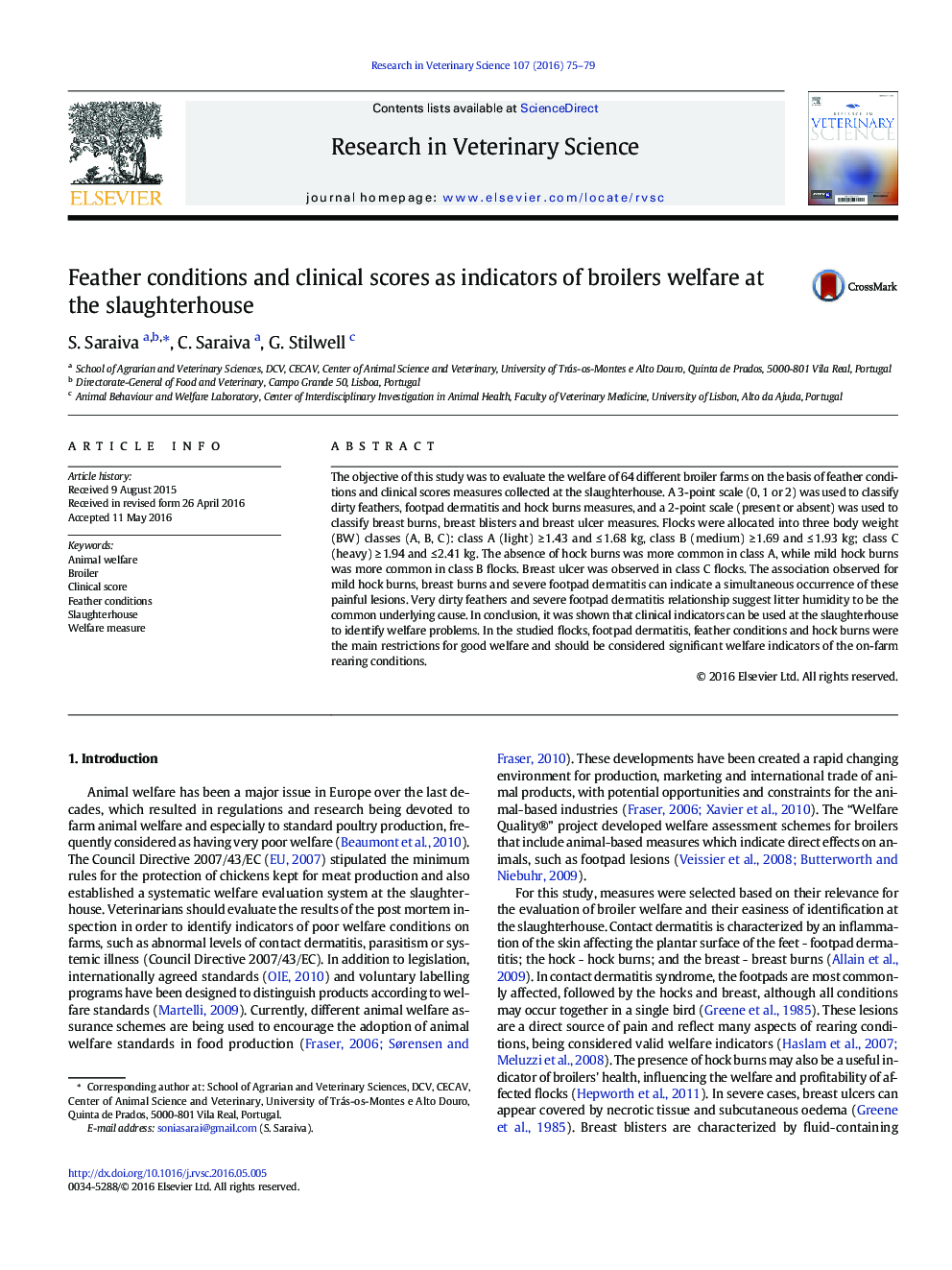| Article ID | Journal | Published Year | Pages | File Type |
|---|---|---|---|---|
| 5794472 | Research in Veterinary Science | 2016 | 5 Pages |
â¢Broilers welfare was assessed on basis of feather conditions and clinical scores collected at the slaughterhouse.â¢Relationships between broilers welfare measures were established.â¢The effect of weight classes was observed for absence of hock burns, mild hock burns and breast ulcers.â¢Footpad dermatitis and feather hygiene conditions were the main restrictions of good welfare.
ABSTRACTThe objective of this study was to evaluate the welfare of 64 different broiler farms on the basis of feather conditions and clinical scores measures collected at the slaughterhouse. A 3-point scale (0, 1 or 2) was used to classify dirty feathers, footpad dermatitis and hock burns measures, and a 2-point scale (present or absent) was used to classify breast burns, breast blisters and breast ulcer measures. Flocks were allocated into three body weight (BW) classes (A, B, C): class A (light) â¥Â 1.43 and â¤Â 1.68 kg, class B (medium) â¥Â 1.69 and â¤Â 1.93 kg; class C (heavy) â¥Â 1.94 and â¤Â 2.41 kg. The absence of hock burns was more common in class A, while mild hock burns was more common in class B flocks. Breast ulcer was observed in class C flocks. The association observed for mild hock burns, breast burns and severe footpad dermatitis can indicate a simultaneous occurrence of these painful lesions. Very dirty feathers and severe footpad dermatitis relationship suggest litter humidity to be the common underlying cause. In conclusion, it was shown that clinical indicators can be used at the slaughterhouse to identify welfare problems. In the studied flocks, footpad dermatitis, feather conditions and hock burns were the main restrictions for good welfare and should be considered significant welfare indicators of the on-farm rearing conditions.
